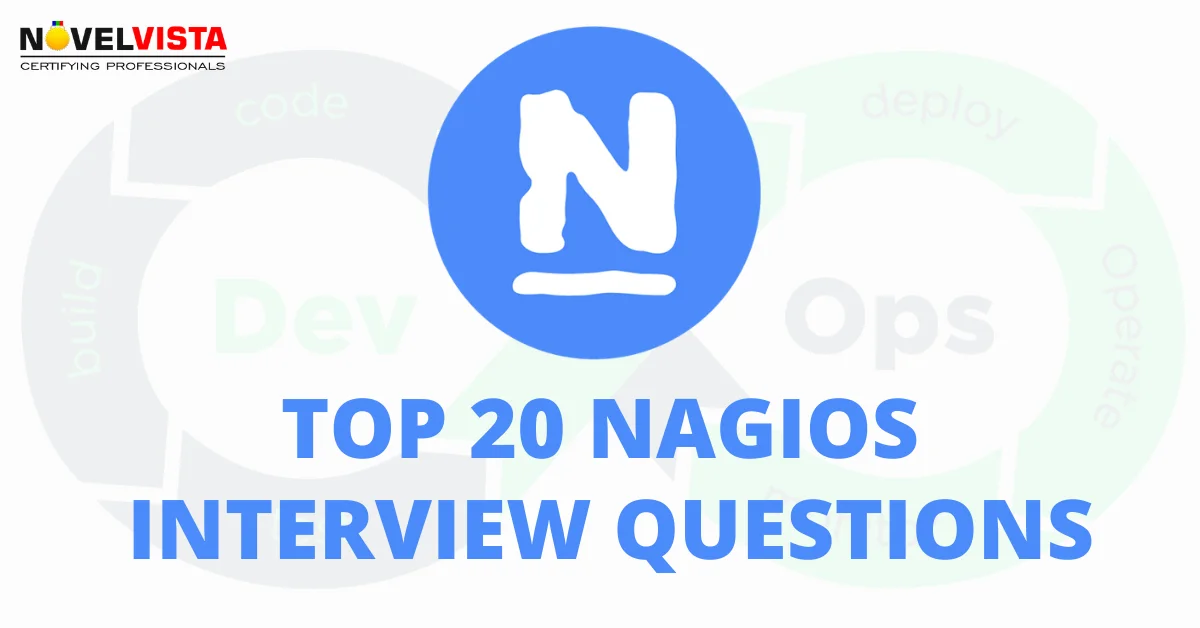Enroll Now and Get Upto 30% Off
* Your personal details are for internal use only and will remain confidential.

Last updated 22/05/2023

While we have been talking too much about the DevOps tools, you must be thinking, how come we could miss out on Nagios?
And you are right!
From the time Ethan Galstad and a group of developers originally wrote Nagios as NetSaint, it has been quite popular among almost every kind of business. Nagios or Nagios Core is a free and open-source computer-software application that monitors systems, networks, and infrastructure. Nagios offers to monitor and alerting services for servers, switches, applications, and services. It alerts users when things go wrong and alert them a second time when the problem has been resolved.
So you understand right how heavily Nagios can contribute to a DevOps culture? Most of the organizations think on this same line too! Which is why, they keep Nargios questions at the top priority during their DevOps interview.
You want to know what all do they ask, right? So let us tell you about that! Here are the most popular
Nagios, mostly known as the Nagios core, is open-source software designed to monitor networks, systems, applications, and infrastructures. This software is usually used to track down all the changes in the subject and send important alerts if necessary.
Nagios helps to monitor applications, networks, and infrastructures. It monitors the entire thing and immediately reports in case of failure. In a nutshell, it helps the DevOps professionals to track down and resolve the problem in the early stages before it can cause any serious damage to the organization.
Some features of Nagios that make it an ideal tool for continuous monitoring are:
Some of the Nagios monitoring tools for Linux meeting are:
Just like Nagios, Icinga as well is open-source software used to monitor the networks and applications. The main goal of designing Icinga was to lift up the Nagios in 2009. Although, it works as a separate monitor software.
An active check for Nagios is leveraged to “poll” a service or device to know the status information every once in a while. Nagios supports the way to host the devices and services passively. When we are talking about a Passive check, it is something that can only be performed by the external applications.
Simple Network Management Protocol is a network protocol designed for the monitoring purpose that uses the Object Identifiers in order to define the Management Information Base.
By following these steps below, you can use Nagios to monitor the window machine:
Nagios XI is a powerful monitoring software that helps in monitoring critical infrastructures like network protocols, applications, services, systems metrics.
The benefits of using Nagios are:
Active check is the way to monitor the hosts and services that both Nagios XI and Nagios core use on the pre-determined schedule.
A Nagios network analyzer is an important aspect of the Nagios software that allows it to deeply scan the system and search for any potential threat. The quick and reliable scan enables system admin to gather the data needed regarding the health of the system and granular data through network analysis.
Benefits of monitoring websites with Nagios are:
Databases that support Nagios monitoring are:
Protocols that support Nagios are:
Nagios is open-source object-oriented monitoring software because while using Nagios, users can create the object definitions within Nagios that inherit the other objects. This essential feature can simplify the complex relationship between the components residing in Nagios.
Nagios can be used for different monitoring purposes including both virtual and physical. Hence, it can be used for cloud computing and cloud monitoring
Most common virtualization platforms that use Nagios are:
To configure Nagios, you need to run it with the -v command line with option like: nagios/bin/nagios -v /usr/local/nagios/etc/nagios.cfg.
In Nagios, objects are mainly the elements that are involved in the entire monitoring and alerting logic.
Got all about Nagios as much as you need to? We hope you did. Although, if you still want to clear your Nagios basics, you know you can always join our DevOps sessions. Right? So check out our DevOps courses, and see what fits your Nagios needs the most!
NovelVista Learning Solutions is a professionally managed training organization with specialization in certification courses. The core management team consists of highly qualified professionals with vast industry experience. NovelVista is an Accredited Training Organization (ATO) to conduct all levels of ITIL Courses. We also conduct training on DevOps, AWS Solution Architect associate, Prince2, MSP, CSM, Cloud Computing, Apache Hadoop, Six Sigma, ISO 20000/27000 & Agile Methodologies.
* Your personal details are for internal use only and will remain confidential.